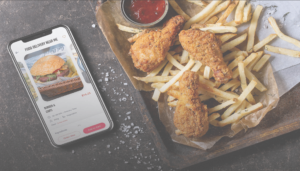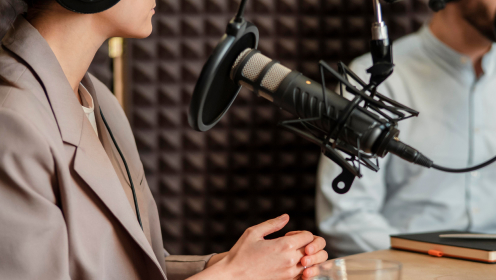 Coronavirus has affected the entire world; it has completely altered the landscape of both consumer and vendor behaviors, and perhaps the most harshly impacted industry has been hospitality. Restaurants have had to pivot their business models catering to mainly delivery and takeout options which directly affects their menu offerings and spending habits in order to preserve as much margin as they can during a time when point-blank, sales are down.
Coronavirus has affected the entire world; it has completely altered the landscape of both consumer and vendor behaviors, and perhaps the most harshly impacted industry has been hospitality. Restaurants have had to pivot their business models catering to mainly delivery and takeout options which directly affects their menu offerings and spending habits in order to preserve as much margin as they can during a time when point-blank, sales are down.
We sat down with Catherine Reeves from RASI to discuss the vast amount of changes they, and our vendors, have seen since Covid began in March; where the trends are taking restaurants today; and, what group purchasing programs are in place to help mitigate the damage that Covid has done to the industry.
WHAT ARE RESTAURANTS EXPERIENCING WITH THE EFFECTS OF COVID?
Are restaurant spending habits changing? Are they going to, let’s say, a Restaurant Depot over a Sysco?
One of the biggest trends we’ve seen to date and the biggest change in spending habits has been towards disposables. Because restaurants have focused their menus on the offerings that will best translate into a to-go item, they’re looking more heavily into paper products and packaging that will preserve the integrity of their brand and the quality of their food.
We’ve also seen that the supply and demand of disposables is at an all-time high right now, so restaurants are seeing these huge price surges and some are experiencing a lack of needed product.
“It’s for this reason that we’re in the trenches with restaurants fighting to find every penny we can and put programs in place that will ensure our restaurants are seeing the savings that are critical to their survival.”
– Cat Reeves, Strategic Restaurant Purchasing Analyst
In the first 3 months of the year, RASI clients, globally, were spending about $900,000 per month on Restaurant Disposables, to-go supplies, and similar items. Looking at the data from May – July, those numbers have gone up to around $1.8 million; so the spend on disposable items has nearly doubled for the same time period, and that’s even with many restaurants facing lower sales numbers.
WATCH THE VIDEO BELOW!
HOW DOES A PURCHASING PROGRAM HELP FOR DELIVERY & TO-GO ITEMS?
The landscape of delivery services has already been changing for the last year or so, and as we recently discussed, due to Covid we’re now really in the thick of best practices to get the most out of your delivery options so it’s critical to drive the value in the packaging of your to-go products. The challenge here is for restaurants to find that quality while economically saving on the spending side, which is where manufacturer rebates come into play.
The margin on any private label product is going to be far greater than it is on a branded product, but the demands of to-go packaging and delivery based packaging are far greater now for quality than they’ve ever been in the past. Restaurants are looking to get their product to the end-user, the consumer, in the best way possible to preserve the integrity of their brand. If you think about the guest experience inside of a restaurant, you, your staff, the kitchen, up to the front of the house and all the way to the table, have control of that product from start to finish; whereas, in the delivery and take out world, you simply don’t have full control of the product. So, using the proper container and product that will give you the best chance of maintaining that brand consistency and giving your guest a quality experience, is at the forefront of every restaurant right now.
Restaurants are feeling uneasy and rightly so. Beyond letting go of valued staff members, they’ve had to turn around and try to figure out how they’re going to extend their outdoor dining, how they’re going to take what was normally inside the four walls as an experience and how to get that experience out to the guest. With a broadline-specific purchasing program in place, like Dining Alliance’s initiative with Dart, restaurants can experience manufacturer buying rebates that will ultimately help their bottom line while maintaining that guest experience at the highest level.
“We’ve got a restaurant in Chicago that on two disposable items they earned enough last quarter to offset 96% of their approximate accounting fees. Those two items yielded roughly $700.00 a month in savings.”
– Cat Reeves, Strategic Purchasing Analyst
HOW DOES A MANUFACTURER REBATE WORK?
With a Manufacturer Rebate Program, the data is normalized from all the spending across a client base. Those numbers are then sent up to the large aggregators, who then make manufacturer deals. Those deals are then applied directly to the purchased products for our restaurants.

Moving away from disposables into a food product, let’s take for example, chicken wings; let’s say you’re buying Tyson Chicken wings but you join a program with Perdue with available rebates. If you switch to that Perdue Chicken wing, but you’re still using Sysco as your distributor, no one is forcing you to switch your broadliner; so if you work with Sysco’s local street rep, you can still get the product (Perdue in this example) with the manufacture rebate.
WHAT ARE THE PROGRAMS THAT RASI CAN OFFER?
Unfortunately, RASI is not a Group Purchasing Organization….but! We can recommend joining our partners Group Purchasing Organizations: join Dining Alliance for independent restaurants or join Consolidated Concepts for larger, multi-unit restaurant operations.
Their programs aim to take purchases from single and multi-units that were spread around the country and combine them so that they could see the aggregate spend on like-style items, and then create programs to give restaurants more purchasing power, insights, spend management, cost savings, and more!







